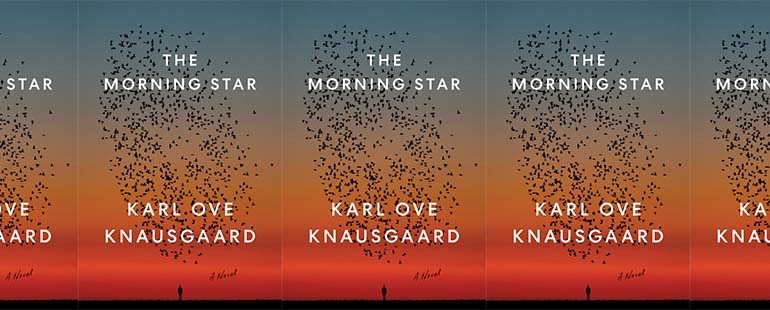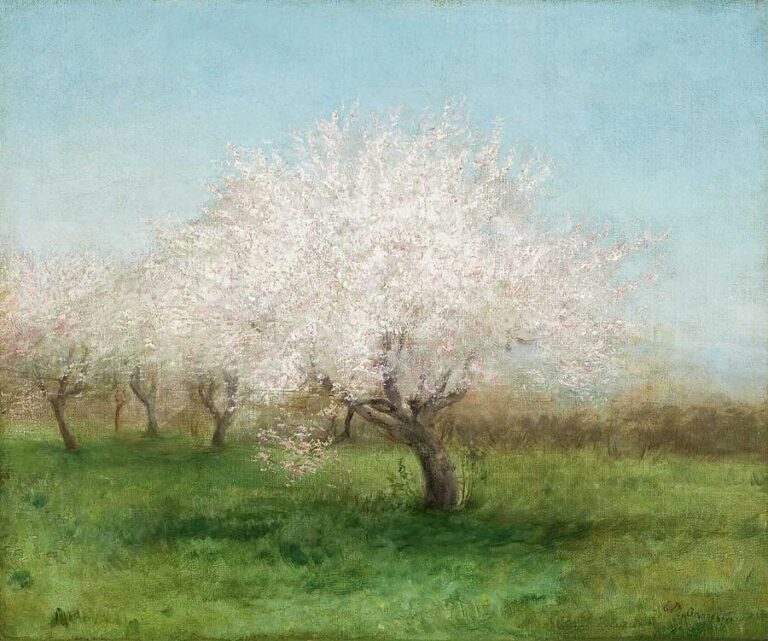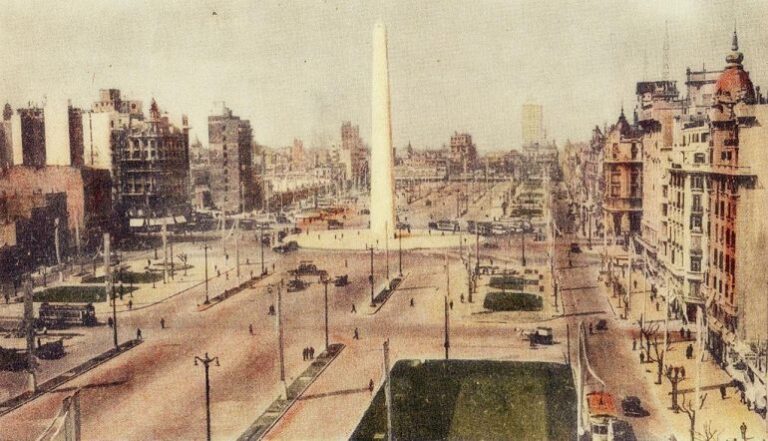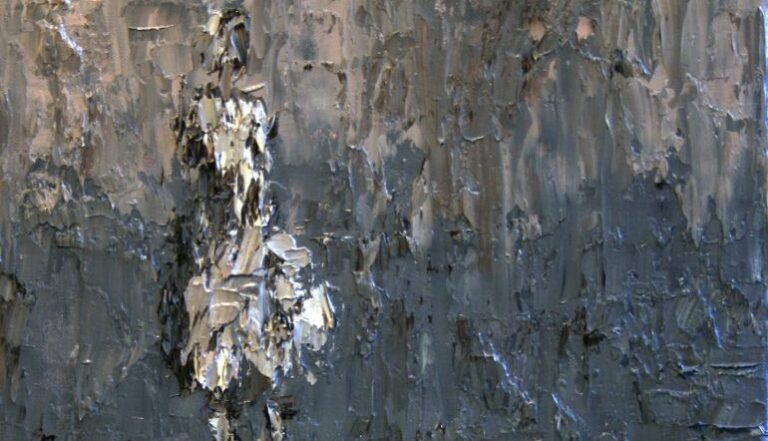The Morning Star and Endings

Karl Ove Knausgaard’s The Morning Star might or might not be a novel about the end of the world. Published last month in English translation by Martin Aitken, the first book of a presumed trilogy and a work about the nature of evil—if one takes its 666 pages in the US edition as any indication—the novel adopts as its epigraph a quote from the biblical book of Revelations: “And in those days shall men seek death, and shall not find it: and shall desire to die. And death shall flee from them.” Such front matter seems to suggest that the book will explore an apocalyptic series of events or, if one takes the biblical attribution seriously, might even focus on the Last Days. While plenty of portents do frighten or bemuse the novel’s characters, and while undisguised evil of the sort that might herald the end of the world causes mayhem, the novel, however, seems uninterested in the idea of apocalypse, which once announced is then deferred indefinitely (possibly to the second and third books of the trilogy). Rather, as readers come to discover, The Morning Star goes on to focus obsessively on the smaller processes of cessation, destruction, and death—biological, mental, and interpersonal—that govern our existence even under normal circumstances. Written at the height of the COVID-19 pandemic, Knausgaard’s new work compels readers to pay attention to the dissolution of animal life and our reliance on it, to the foreseen and unforeseen ends of relationships, to the shortness of the human life span as a result of aging and disease, to the possibility of mental extinction, and to the book’s own looming narrative endpoint. In The Morning Star, all things have an end.
The novel explores its obsession with death by using a very old, very simple plot: sometime in the recent past, after one unbearably hot day at the end of August, a new star appears in the sky above Norway. The novelistic star might be a new Star of Bethlehem, or a celestial body modeled after one of the numerous comets and stars taken as divine signs in medieval and early modern chronicles. After its appearance, strange things begin to happen. Meanwhile, however, life goes on.
The characters in the novel who notice the star are all experiencing ongoing personal or professional problems, and it is on these problems that the plot focuses. With the kind of realistic (and perhaps self-inspired) detail that sometimes seems to border on autofiction, Knausgaard recounts the experiences of nine individuals, representing different aspects of society (though in fact the characters are all more alike than they are different, many having at least a tenuous, Knausgaardian connection with culture or with the arts). Among them are a professor of literature and his painter wife, a woman priest in the Church of Norway, a young daycare attendant and after-hours rocker, a drop-out student working at a supermarket, a nurse on a surgical ward, a mental hospital attendant, a failed journalist, a museum curator and young mother, and a conflicted documentary filmmaker. Whether by choice or necessity, when the star appears, it finds them trying to understand or reevaluate their place in the world—trying, in other words, to come to terms with the social and familial roles they have taken on, or in which they find themselves moored. Even if happy—or at least believing themselves to be happy—all seem troublingly removed from others, apart, separate, unable to communicate with themselves or anyone else.
As Stephen King’s Stand (1978) demonstrated, such misfits can have great novelistic potential as flawed but compellingly human sojourners in a landscape suddenly turned apocalyptic. And, if the star seems less important in its first manifestation compared to the overwhelming pressures of an already unsettled existence, this ordinary disregard for the fantastic also seems narratively useful, another King-ian conceit. One might say that it is narratively easier to recount the process of a character’s metaphysics or beliefs being turned upside down or significantly altered if that character’s otherwise “normal” problems prevent them from having more esoteric thoughts. It is less of a risk than beginning with a modern John of Patmos, who might have been waiting for such an event all along.
Like his predecessor, Knausgaard takes his time telling such “normal” characters’ stories but, unlike him, he repeatedly asks the reader to consider whether the star has any bearing on the course of their unsettled lives. To underscore the issue, Knausgaard divides the book into two sections, “First Day” and “Second Day,” a division that forces the reader to place the star’s appearance in conversation with the book’s more mundane events. At the same time, however, he also refuses to suggest a clear relationship of cause and effect between the star and the strange turns of the plot. These two days, he seems to suggest, might have passed in much the same way without any celestial interference.
Arne, the literature professor with “hundreds of students,” is vacationing with his daughter, twin sons, and wife, Tove, at their summer house along the coast. He has been trying unsuccessfully to write. Tove, an artist, is in the grip of a psychosis that keeps getting worse. Over the course of the two days, she gruesomely kills two cats, whose deaths Arne covers up, unable or perhaps unwilling to acknowledge them. Arne himself begins to unravel, leaving the kids, going on an all-night bender in the woods, crashing the car, and realizing that he has to have his wife committed. Katherine, a dutiful priest, returns from a conference at the Bible Society in Oslo, where she meets up with university friends, only to decide, impulsively, not to go home to her husband and children but to spend the night alone in a hotel. Her husband becomes deeply suspicious. She, distraught, considers leaving him while, as part of her work duties, she gives the funeral oration for a stranger she believes might have been the man she met on the plane on her way home. Solveig, a nurse, spends her time carrying for her elderly, disabled mother who, on the second day, has a bad fall and seems close to death; even worse, after a stroke patient experiences brain death, she is called in to help the transplant team harvest his organs and finds him alive. Jostein, a crime journalist demoted to the Arts & Culture section of the local paper, drinks his way through the first night, chasing a painter he had profiled earlier, and has increasingly intense blackouts. Instead of going home, however, he gets a major scoop about a gruesome murder and goes off in pursuit. Meanwhile, his wife, Turid, works her night shift at a facility for the mentally ill, where, asthmatic, worried about her family, and searching for downers to make her work more bearable, she accidentally lets a violent patient escape. On the second day, she finds out that something terrible has happened at home. Egil, the failed documentary filmmaker and a rich developer’s son, sits in his summer cabin writing, smoking, drinking, and reading. Over the course of the two days, this most Knausgaardian of characters suddenly finds himself saddled with other people’s problems—something he has been desperately trying to avoid. The horror these characters experience is the horror of midlife crises, substance abuse, mental illness, dysfunctional relationships, terrible workplaces, and the occasional unexpected encounter with climate change. The characters’ lives might have been much the same even if the star had not appeared—and, in fact, since their ongoing problems predate it, one might say that if the star has any impact at all on their experiences, it is only to cause them additional but unrelated distress.
And yet, the mood that pervades the novel is one of fear, and the star cannot be discounted altogether—the many small and large deviations from the ordinary that all of the characters experience happen concurrently, just at the moment when it rises in the sky. Even more troublingly, what all of these more or less mundane problems seem to have in common is a literal or figurative confrontation with death. Despite the rational reasons why such a confrontation might have happened to each of the characters at that particular time, in Knausgaard’s novel the rational explanations become unconvincing. So much death, all at once, is discomfiting. Death pervades the landscape in both subtle and overt ways. From the dead man being buried by Katherine, whose demise seems impossible and inexplicable given his simultaneous presence in town, to the clinically dead patient whose chest is cracked to harvest his organs but who mysteriously returns to life as it happens, to the dead cat killed by Tove, who Arne seems to think refuses to stay dead, to the character who shoots himself but can’t die, to characters who see the dead—an old narrative shtick—death is made strange, irrational, grotesque, melodramatic, and omnipresent. As this happens, the irrational elements of the plot begin to overwhelm it.
Knausgaard seems to want the reader to think about whether or not the star is in some way responsible for these odd occurrences, even as, in a sense, he dismisses the symbol, relegating it to brief mentions in order to focus on what such moments in the proximity of death can tell us about it as a process. Correctly, he seems to assume that one cannot have an end of the world—with all that this would imply religiously, morally, and philosophically—without first delving into what such an end would signify in religious, moral, and philosophic terms, or without examining the broader question of current perceptions of death. To make an end of the world, he seems to reason, one must first find out how we look at endings in general, and at our personal end in particular, and make death meaningful again.
Nevertheless, despite portraying different types of experience with death, some gruesome, some pitiful, and some very moving, Knausgaard does not entirely succeed in getting at what it means to die or in making it meaningful. Perhaps to extricate himself from this impasse, he attempts to write more straightforwardly about death in what might be termed the third section of the book, which he devotes to a philosophical essay, “On Death and the Dead,” by Egil, the failed documentary filmmaker. Even in this case, however, the question of how we should understand death is not answered entirely successfully.
The essay pursues a number of narrative threads, none of which are easily reconcilable, but, broadly speaking, makes two claims. The first is that death has been misunderstood, and that it is an evolutionary development that benefits the species and the planet. “Death is what makes evolution possible,” Egil writes. “And evolution is what made us possible. . . . Death created us.” It is as if, for Egil, the survival of a species always involves its opposite, the failure to survive, just as the reproduction of members of a species always involves its opposite, the failure to reproduce. Is it correct to argue that such failures are in fact what drive the successes? Following this unorthodox idea, Egil goes on to argue that our consciousness evolved alongside our awareness of its eventual extinguishment, and that to be conscious involves being aware of death. He ends by suggesting that as human beings continue to make advances in medicine and technology, we will reach a point when death will be no more. Then, he argues, people will be faced with the breakdown of the evolutionary process, and, given that human beings define themselves against their endpoints, with the new problem that immortality will pose for consciousness.
Egil’s essay also meditates on death as a misunderstood cultural phenomenon, arguing, almost against his first claim, that there are irrational forces at work in the death process, forces that suggest death is not an endpoint at all, but a mysterious otherness. He speaks about Nietzsche’s concept of eternal recurrence, wonders about the history of shamanistic experiences in the liminal spaces between the worlds, imagines prehistoric people and what their art might suggest about the boundaries of experience, and goes on about the Greek and Egyptian afterworlds at great length. Eventually, he focuses on the idea that central to the pre-modern understanding of death is the irrational, a force that, in contradiction to all reason, reveals that, after death, life continues in some other place, in some other way. He asks himself what has happened to this irrational strain that suggested constant mysterious communication between this world and the next and treated death as a journey rather than an end. “Death,” he claims, “was taken from the cave and out into the forest, out of the darkness and into the light, where it appears to us as it is: a slight fissure in the brain, a few microscopic bacteria in the bloodstream, a tiny cell beginning to multiply in the pancreas.” Here, he becomes stuck and reaches the same conclusion as before: “death is becoming smaller and smaller.” He quotes John of Patmos: “and in those days shall men seek death, and shall not find it; and shall desire to die, and death shall flee from them.”
Egil’s observation regarding the smallness of modern death is the beginning point of the novel, which works hard to make death larger and larger, making it take up more and more space in the characters’ consciousnesses and in the plot. To do this, it pursues both of Egil’s questions at the same time: first, if we somehow removed death entirely, would there be an explosion of life? Would there be no more room for new life? Would the evolutionary process break down? In Egil, he seems to answer in the affirmative. With the arrival of the star that may or may not be responsible for what happens subsequently, there are accompanying disturbances felt in nature, in which the conventional evolutionary processes begin to break down: wildlife flourishes, and hundreds of crabs overrun the roadways; deer approach humans unafraid of predation; hawks eat birds in broad daylight; huge schools of fish appear off the coast; dead cats maybe come to life; the weather becomes unbearably hot and moist. At the same time, the book also tries out Egil’s other question: what if we agreed that the ancients were right and that death leads not to complete extinction but to some other form of existence? If we looked at it more closely, validating personal, seemingly irrational experiences, would we see this? Yes, is Knausgaard’s answer. Bizarrely, the book posits that the classical underworld might really exist in some, at least mental, form. A character takes a trip there in the course of the novel, where he meets the dead, drinks from the Lethe, and has a hard time coming back, in a kind of retelling of the myth of Orpheus and Eurydice. There really is an afterlife, Christian or pagan or pantheistic, the book claims. Signs abound. Gods or monsters cross over into the novel’s banal present, bringing their rituals and Biblical blood-smears with them, though Knausgaard refuses to define what these beings are. The dead—transplant patients, children, and long-buried fathers and mothers—all begin to come back too, partially or completely.
Is Knausgaard writing an apocalypse if he intends to raise all the dead? It certainly seems so, though at least in this installment of the trilogy, the apocalypse never comes (which is not to say that it won’t in the next one). Would this be a more terrifying prospect than having everyone die, as in Stephen King’s apocalypse? Perhaps. In any case, in Knausgaard’s novel, death, and by extension our usual understanding of what a narrative end entails, no longer seems to apply. The book leaves off with a promise of “more to come,” the standard deferral of serial fiction. It also defers thematically, without having solved the problem of how to talk about the deaths that permeate it, leaving the reader in unbearable tension between Egil’s scientific and cultural explanations. Indeed, what we are left with is a star, that might or might not be a divine sign, and a series of unforeseen events around which all meanings haphazardly congregate. “A morning star,” Egil thinks. “I am the bright Morning Star, Jesus said. But in Isaiah the Morning Star was the Devil. Wasn’t that right? I’d have to check.” When Knausgaard publishes his next novel, we too will have to do the same.
This piece was originally published on October 25, 2021.


